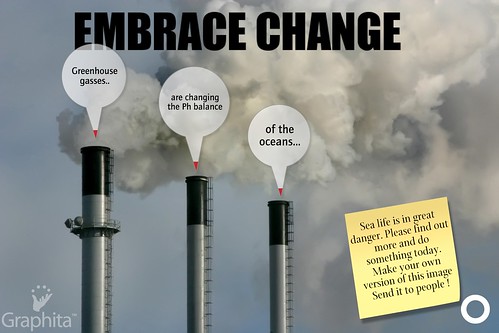 Imagine a situation where you are thinking of buying a good and so you go to an e-commerce marketplace such as Amazon, eBay, Etsy or Onbuy. How confident are you about the quality of the different brands/makes that are listed for sale on these digital platforms? How do you choose which product to buy? Is the decision strongly influenced by customer reviews and rating?
Imagine a situation where you are thinking of buying a good and so you go to an e-commerce marketplace such as Amazon, eBay, Etsy or Onbuy. How confident are you about the quality of the different brands/makes that are listed for sale on these digital platforms? How do you choose which product to buy? Is the decision strongly influenced by customer reviews and rating?
When a customer is choosing what to buy it raises an interesting question: to what extent can the true quality of the different goods/services be observed at the time of purchase? Although perfect observability is highly unlikely, the level of consumer information about a product’s true quality will vary between different types of transaction.
For example, when consumers can physically inspect and test/try a product in a shop, it can help them to make more accurate judgements about its quality and condition. This poses a problem for online sellers of high-quality versions of a good. Without the ability to inspect the item physically, consumers may be unsure about its characteristics. They may worry that the online description provided by the seller deliberately misrepresents the true quality of the item.
Consumers may have other concerns about the general reliability of online sellers. For example, in comparison to buying the product from a physical store, consumers may worry that:
- They will have to wait longer to receive the good. In many cases, when consumers purchase a product from a high-street store, they can walk away with the item and start using it straight away. When purchasing on line, they may end up waiting weeks or even longer before the product is finally delivered.
- It will be more difficult to return the product and get a refund.
- They are more likely to come across fraudulent sellers who have set-up a fake website.
This greater level of uncertainty about the true characteristics of the product and the general reliability of the seller will have a negative impact on consumers’ willingness to pay for all goods. This impact is likely to be particularly strong for high-quality versions of a product. If consumers’ willingness to pay falls below the reservation price of many sellers of high-quality goods, then the market could suffer from adverse selection and market failure.
Are there any within-market arrangements that could help deal with this issue? One possibility is for sellers to signal the quality of their products by posting consumer ratings and reviews. If consumers see that a product has many positive ratings, then this will increase their confidence in the quality of the product and so increase their willingness to pay. This could then reduce both levels of asymmetric information and the chances of adverse selection occurring in the market,
There is survey evidence that many people do read consumer reviews when choosing products on line and are heavily influenced by the ratings.
The problem of fake reviews
 However, when consumers look at these reviews can they be sure that they reflect consumers’ honest opinions and/or actual experience of using the good or service? Firms may have an incentive to manipulate and post fake reviews. For example, they could:
However, when consumers look at these reviews can they be sure that they reflect consumers’ honest opinions and/or actual experience of using the good or service? Firms may have an incentive to manipulate and post fake reviews. For example, they could:
- Deliberately fail to display negative reviews on their website while claiming that all reviews are published.
- Use internet bots to post thousands of automated reviews.
- Take positive reviews from competitors’ websites and post them on their own website.
- Pay some customers and/or employees to write and post 5-star reviews on their own website.
- Pay some customers and/or employees to write and post 1-star reviews on their competitors’ websites.
- Set up a website that they claim is independent and use it to provide positive endorsements of their own products.
If the benefits of this type of behaviour outweigh the costs, then we would expect to see fake reviews posted on websites. If their use becomes widespread, then the value of posting genuine reviews will fall. The market may then settle into what economists call a ‘pooling equilibrium’.
What evidence do we have on the posting of fake reviews? Given their nature, it is difficult to collect reliable data and there are large variations in the reported figures. One recent study found evidence of fake reviews being purchased and posted for approximately 1500 products on Amazon.
Can consumers screen reviews and identify those that are more likely to be fake? The following are some tell-tale signs.
- Products that receive a large number of very positive reviews over a short period (i.e. a few days). There are then long periods before the product receives another large number of positive reviews.
- A high percentage of 5-star reviews. Two, three and four start reviews are more likely to be genuine.
- Reviews that specifically mention a rival firm’s products.
- Reviewers who have given very high ratings to large number of different products over a short period of time.
- Reviews that include photos/videos.
Competition authorities around the world have been investigating the issue and the Competition and Markets Authority has announced plans to introduce new laws that make the purchasing and posting of fake reviews illegal.
Articles
Questions
- Outline different types of asymmetric information and explain the difference between adverse selection and moral hazard.
- Using a diagram, explain the impact of uncertainty over the quality of a good on consumers’ willingness to pay.
- Will consumers always face greater uncertainty over quality when purchasing goods on line rather than visiting the high street? Discuss your answer making reference to some specific examples.
- Using diagrams, explain how a market for high-quality versions of a good might collapse if there is asymmetric information. Using price elasticity of supply, explain the circumstances when the market is more likely to collapse.
- Discuss some of the benefits and costs for a firm of purchasing and posting fake reviews.
 Most real-world markets are a long way from the perfect information setting assumed in perfectly competitive markets. Many industries therefore rely heavily on word of mouth to increase demand. This is especially true in the digital age where information can spread extremely rapidly and many websites encourage consumer ratings and reviews. Here, information becomes more and more valuable as it is shared with other people.
Most real-world markets are a long way from the perfect information setting assumed in perfectly competitive markets. Many industries therefore rely heavily on word of mouth to increase demand. This is especially true in the digital age where information can spread extremely rapidly and many websites encourage consumer ratings and reviews. Here, information becomes more and more valuable as it is shared with other people.
However, the economist Joshua Gans has suggested that traditional business models are not well suited to fully exploiting the benefits of the sharing of information. This is because, whilst enthusiastic consumers spread the word, the seller has traditionally acted as a gate-keeper, maintaining complete control over who obtains the product. The problem is that this creates a friction which can dampen momentum for the product from building.
In contrast, Gans describes a novel alternative strategy that was used by the band the XX when they released their second album earlier this year. As is becoming more and more common, the band premiered the album as an online stream. However, what was unique about the XX’s approach was that they gave the stream to a single superfan. They hoped that this chosen fan would initiate the spreading of the stream amongst other fans. After a worrying delay in which he enjoyed his monopoly ownership, this is what he eventually did. Just 24 hours later the stream had been player millions of times and the site crashed under the burden.
Of course, one reason why suppliers may need close control is to be able to charge for the product. If the sharing information must involve giving something away for free, it typically makes no commercial sense. However, Gans also points out that recommendations are more credible if the information has been costly to obtain. Otherwise, it may simply be cheap talk and therefore carry little value.
The balancing act for suppliers is therefore to introduce a hurdle cost in obtaining the information whilst trying to ensure that, once it has been passed on, the recipient encounters as little friction as possible in making use of it. Gans suggests that alternative business models can be developed which achieve this balance. If these can profitably encourage the sharing of information a win-win situation for sellers and buyers is created.
Furthermore, Gans is experimenting with selling his new book about sharing information under an example of one such model. Having bought the e-book for $4.99 you will find a coupon at the back which you can pass on to a friend or family member which allows them to buy their own copy of the book for a mere $0.99. However, as he points out, there is a potential danger to this strategy:
“All my readers could form a collective and potentially buy one copy for $4.99 and then a million for $0.99.”
He has said that he plans to be report back on how the book has sold on his blog at a later date, so it will be interesting to see whether or not the experiment was successful.
The folly of replicating the physical world HBR Blog Network, Joshua Gans (17/11/10)
A shared pricing experiment for my book Digitopoly, Joshua Gans (05/10/12)
Information wants to be…..shared O’Reilly Tools of Change for Publishing, Joe Wikert (16/10/12)
Questions
- Why will the problems described above not arise in the model of perfect competition?
- What type of industries are most likely to rely on word of mouth?
- In what type of industries is the friction described above most likely to happen?
- Describe the dangers with the strategy Gans is adopting for selling his book?
- Explain whether you think these dangers are likely to arise in practice.
- How might the business model be modified to avoid these dangers?
 No market is perfect and when the market mechanism fails to deliver an efficient allocation of resources, we say the market fails and hence there is justification for some government intervention. From a monopolist dominating an industry to a manufacturing firm pumping out pollution, there are countless examples of market failure.
No market is perfect and when the market mechanism fails to deliver an efficient allocation of resources, we say the market fails and hence there is justification for some government intervention. From a monopolist dominating an industry to a manufacturing firm pumping out pollution, there are countless examples of market failure.
The Guardian is creating a guide to climate change, covering areas from politics to economics. The problem of climate change has been well documented and this blog considers a particular issue – the case for climate change or the environment as a market failure. In many cases just one market failure can be identified, for example an externality or a missing market. However, one of the key problems with climate change is that there are several market failures: externalities in the form of pollution from greenhouse gases; poor information; minimal incentives; the problem of the environment as a common resource and the immobility of factors of production, to name a few. Each contributes towards a misallocation of resources and prevents the welfare of society from being maximised.
 When a market fails, intervention is justified and economists argue for a variety of policies to tackle the above failures. In a first-best world, there is only one market failure to tackle, but in the case of the environment, policy must be designed carefully to take into account the fact that there are numerous failings of the free market. Second-best solutions are needed. Furthermore, as the problem of climate change will be felt by everyone, whether in a developed or a developing country, international attention is needed. The two articles below are part of the Guardian’s ultimate climate change guide and consider a huge range of economic issues relating to the problem of environmental market failure.
When a market fails, intervention is justified and economists argue for a variety of policies to tackle the above failures. In a first-best world, there is only one market failure to tackle, but in the case of the environment, policy must be designed carefully to take into account the fact that there are numerous failings of the free market. Second-best solutions are needed. Furthermore, as the problem of climate change will be felt by everyone, whether in a developed or a developing country, international attention is needed. The two articles below are part of the Guardian’s ultimate climate change guide and consider a huge range of economic issues relating to the problem of environmental market failure.
Why do economists describe climate change as a ‘market failure’? Guardian, Grantham Research Institute and Dunca Clark (21/5/12)
What is the economic cost of climate change? Guardian (16/2/11)
Questions
- What is meant by market failure?
- What are the market failures associated with the environment and climate change? In each case, explain how the issue causes an inefficient allocation of resources and thus causes the market to fail? You may find diagrams useful!
- What is meant by the first-best and second-best world?
- What does a second-best solution aim to do?
- Using diagrams to help your explanation, show how a tax on pollution will have an effect in a first best world, where the only market failure is a negative externality and in a second best world, where the firm in question is also a monopolist.
- What solutions are there to the problem of climate change? How effective are they likely to be?
- Does the need to tackle climate change require international co-operation? Can you use game theory to help your explanation?!
There has always been relatively widespread agreement that the best method to produce and finance education is via the government. Education is such a key service, with huge positive externalities, but information is far from perfect. If left to the individual, many would perhaps choose not to send their children to school. Whether it be because they lack the necessary information, they don’t value education or they need the money their child could earn by going out to work – perhaps they put the welfare of the whole family unit above the welfare of one child. However, with such large external benefits, the government intervenes by making education compulsory and goes a step further in many countries and provides and finances it too.
However, is this the right way to provide education? People like choice and the ability to exercise their consumer sovereignty. The more competition there is, the more of an incentive firms have to provide consumers with the best deal, in terms of quality, efficiency and hence price. We see this every day when we buy most goods. Many car salesrooms to visit – all the dealerships trying to offer us a better deal. Innovation in all industries – one phone is developed, only to be trumped by a slightly better one. This is only one of the many benefits of competition. Yet, education sectors are largely monopolies, run by the government. Many countries have a small private sector and there is substantial evidence to suggest that education standards in it are significantly higher. Research from Harvard University academics, covering 220,000 teenagers, suggests that competition from private schools improves achievement for all students. Martin West said:
“The more competition the state schools face for students, the stronger their incentive to perform at high levels…Our results suggest that students in state-run schools profit nearly as much from increased private school competition as do a nation’s students as a whole.”
The study concluded that an increase in the percentage of private school pupils made the education system more competitive and therefore more efficient, with an overall improvement in education standards. With so much evidence in favour of competition in other markets in addition to the above study, what makes education so different?
Or is it different? Should there be more competition in this sector – many economists, including Milton Friedman, say yes. He proposed a voucher scheme, whereby parents were given a voucher to cover the cost of sending their child to school. However, the parents could decide which school they sent their child to – a private one or a state run school. This meant that schools were in direct competition with each other to attract parents, their children and hence their money. Voucher schemes have been trialed in several places, most prominently in Sweden, where the independent sector has significantly expanded and results have improved. Is this a good policy? Should it be expanded and implemented in countries such as the UK and US? The following articles consider this.
Articles
School Competition rescues kids: the government’s virtual monopoly over K-12 education has failed Hawaii Reporter, John Stossel (30/10/11)
Private schools boosts national exam results Guardian, Jessica Shepherd (15/9/10)
Can the private sector play a helpful role in education? Osiris (10/8/11)
Voucher critics are misleading the public Tribune Review, TribLive, Joy Pullmann (30/10/11)
Vouchers beat status quo The Times Tribune (29/10/11)
Why are we allowing kids to be held hostage by a government monopoly? Fox News, John Stossel (26/10/11)
Free Schools – freedom to privatise education The Socialist (26/10/11)
Anyone noticed the Tories are ‘nationalising’ schools? Guardian, Mike Baker (17/10/11)
Publications
School Choice works: The case of Sweden Milton & Rose D Friedman Foundation, Frederick Bergstrom and Mikael Sandstrom (December 2002)
Questions
- What are the general benefits of competition?
- How does competition in the education market improve efficiency and hence exam results? Think about results in the private sector.
- What is the idea of a voucher scheme? How do you think it will affect the efficiency of the sector?
- What do you think would happen to equity in if a scheme such as the voucher programme was implemented in the UK?
- How do you think UK families would react to the introduction of a voucher scheme?
- What other policies have been implemented in the UK to create more competition in the education sector? To what extent have they been effective?
Families in the UK seemed to have been squeezed in all areas. With incomes flat, inflation rising, petrol and bills high, there seems to be a never ending cycle of price rises without the corresponding increase in incomes. This has been confirmed by the latest figures released from the big six energy companies, whose profit margins have risen from £15 per customer in June to £125 per customer per year. This is assuming that prices remain the same for the coming year.
The regulator, Ofgem has said that profit margins will fall by next year and that they are ensuring that price comparisons between the big energy companies become much easier to allow consumers to shop around. It is a competitive market and yet due to tariffs being so complicated to understand, many consumers are simply unable to determine which company is offering them the best deal. There is certainly not perfect knowledge in this market. Tim Yeo, the Chair of the Energy and Climate Change Committee said the profit margins were:
‘Evidence of absolutely crass behaviour by the energy companies, with a jump in prices announced in the last few months ahead of what will be a winter in which most families face their highest ever electricity and gas bills’
Ofgem will publish proposals later this year with suggestions of how to make the market more competitive. We have already seen in the blog “An energetic escape?” how Ofgem is hoping to reduce the power of the big six by forcing them to auction off some of the electricity they generate. The aim is to free up the market and allow more firms to enter. With the winter fast approaching and based on the past 2 years of snow and cold weather, it is no wonder that households are concerned with finding the best deals in a bid to reduce just one of their bills. The following articles consider this issue.
Energy price hikes see profits soar The Press Association (14/10/11)
Energy suppliers’ profit margins eight times higher, says regulator Ofgem Telegraph (14/10/11)
Energy firms’ profit margins soar, Ofgem says BBC News (14/10/11)
Energy firms’ profits per customer rise 733%, says Ofgem Guardian, Dan Milmo and Lisa Bachelor (14/10/11)
Regulator proposes radical change to energy market Associated Press (14/10/11)
Energy bills face overhaul in first wave of reform Reuters, Paul Hoskins (14/10/11)
Ofgem tells energy companies to simplify tariffs Financial Times, Michael Kavanagh (14/10/11)
You can’t shop around in an oligopoly Financial Times, William Murray (13/10/11)
Questions
- What type of market structure best describes the energy market?
- Of the actions being taken by Ofgem, which do you think will have the largest effect on competition in the market?
- Are there any other reforms you think would be beneficial for competition?
- Why is transparency so important in a market?
- What barriers to entry are there for potential competitors in the energy market?
- Why do you think profit margins are so high in this sector?
 Imagine a situation where you are thinking of buying a good and so you go to an e-commerce marketplace such as Amazon, eBay, Etsy or Onbuy. How confident are you about the quality of the different brands/makes that are listed for sale on these digital platforms? How do you choose which product to buy? Is the decision strongly influenced by customer reviews and rating?
Imagine a situation where you are thinking of buying a good and so you go to an e-commerce marketplace such as Amazon, eBay, Etsy or Onbuy. How confident are you about the quality of the different brands/makes that are listed for sale on these digital platforms? How do you choose which product to buy? Is the decision strongly influenced by customer reviews and rating? However, when consumers look at these reviews can they be sure that they reflect consumers’ honest opinions and/or actual experience of using the good or service? Firms may have an incentive to manipulate and post fake reviews. For example, they could:
However, when consumers look at these reviews can they be sure that they reflect consumers’ honest opinions and/or actual experience of using the good or service? Firms may have an incentive to manipulate and post fake reviews. For example, they could:

